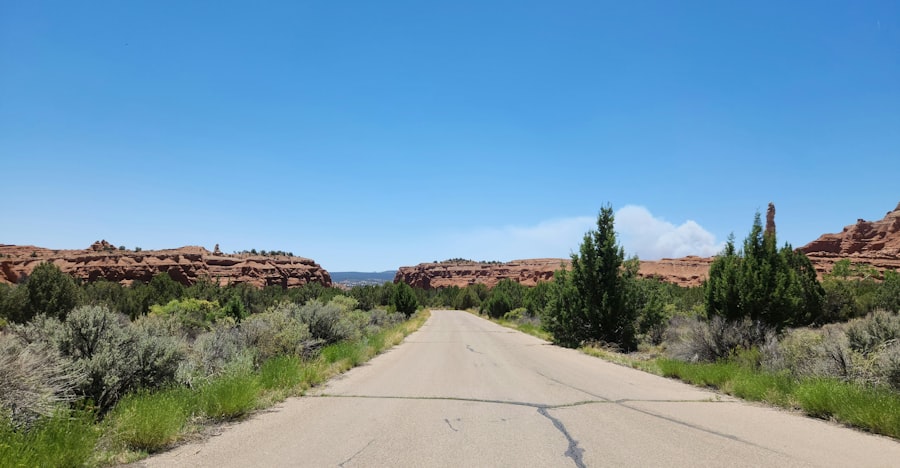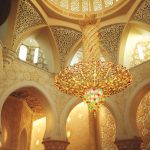Download links
How to install Marvel at the 8k8 Banaue Rice Terraces APK?
1. Tap the downloaded Marvel at the 8k8 Banaue Rice Terraces APK file.
2. Touch install.
3. Follow the steps on the screen.
Description
The Banaue Rice Terraces, often referred to as the “Eighth Wonder of the World,” are a stunning testament to the ingenuity and resilience of the Ifugao people in the Philippines. These terraces were carved into the mountains over 2,000 years ago, showcasing an extraordinary feat of agricultural engineering that has been passed down through generations. The origins of these terraces can be traced back to the pre-colonial period when the Ifugao tribes began to cultivate rice in the steep, mountainous terrain of the Cordillera region.
Utilizing simple tools and traditional farming techniques, they transformed the rugged landscape into a series of cascading fields that not only provided sustenance but also fostered a deep connection to their environment. The construction of the terraces was not merely a practical endeavor; it was also a reflection of the Ifugao’s cultural identity and spiritual beliefs. The rice terraces are intricately linked to their rituals and customs, with rice being considered a sacred crop.
The Ifugao people developed a complex system of irrigation that utilized water from nearby rivers and streams, channeling it through a network of bamboo pipes and dikes. This sophisticated agricultural system allowed them to cultivate rice year-round, ensuring food security for their communities.
Key Takeaways
- The Banaue Rice Terraces were built over 2,000 years ago by the Ifugao people, showcasing their advanced agricultural engineering skills.
- The 8k8 Banaue Rice Terraces are an engineering marvel, with an intricate irrigation system that utilizes gravity to distribute water across the terraces.
- The terraces hold great cultural significance for the Ifugao people, representing their connection to the land and their ancestors.
- The Banaue Rice Terraces have had a significant environmental impact, leading to soil erosion and loss of biodiversity in the region.
- Preservation efforts for the Banaue Rice Terraces face challenges such as modernization, tourism, and the need for sustainable agricultural practices.
The Engineering Marvel of the 8k8 Banaue Rice Terraces
Maximizing Arable Land and Minimizing Soil Erosion
The terraces were constructed using locally sourced materials, primarily stone and mud, which were skillfully arranged to create a series of flat fields on steep slopes. This design not only maximized arable land but also minimized soil erosion, allowing for sustainable farming practices that have persisted for generations.
An Intricate Irrigation System
One of the most impressive aspects of the Banaue Rice Terraces is their intricate irrigation system. The Ifugao people developed a network of canals and dikes that effectively managed water flow from mountain springs to the terraces. This system is not only functional but also reflects a deep understanding of hydrology and environmental management.
A Model for Modern Agriculture
The careful balance between water supply and crop needs is crucial for maintaining the health of the rice plants, which thrive in the unique microclimate created by the terraces. The engineering behind these terraces is so sophisticated that it has inspired modern agricultural practices around the world, demonstrating how traditional knowledge can inform contemporary solutions to food security challenges.
The Cultural Significance of the Banaue Rice Terraces

The cultural significance of the Banaue Rice Terraces extends far beyond their agricultural value; they are a living testament to the Ifugao people’s identity, traditions, and way of life. The terraces are deeply intertwined with Ifugao cosmology, where rice is not just a staple food but also a symbol of life and prosperity. Rituals surrounding rice planting and harvesting are integral to Ifugao culture, often involving elaborate ceremonies that honor ancestral spirits and seek blessings for a bountiful harvest.
These practices reinforce community bonds and ensure that cultural heritage is preserved for future generations. Moreover, the terraces serve as a canvas for artistic expression within Ifugao society. Traditional crafts such as weaving and wood carving often draw inspiration from the natural beauty of the terraces and their surrounding landscapes.
Festivals celebrating rice harvests are vibrant events filled with music, dance, and storytelling, showcasing the rich cultural tapestry of the Ifugao people. The terraces themselves are often adorned with intricate carvings and symbols that reflect their beliefs and values, further emphasizing their role as cultural landmarks. As such, the Banaue Rice Terraces are not merely agricultural fields; they are a vital part of the Ifugao’s cultural heritage, embodying their history, spirituality, and artistic expression.
The Environmental Impact of the Banaue Rice Terraces
| Aspect | Metrics |
|---|---|
| Deforestation | Amount of forest cleared for terrace construction |
| Biodiversity | Number of plant and animal species affected |
| Soil Erosion | Rate of soil loss due to terrace farming |
| Water Management | Efficiency of water usage in the terraces |
| Carbon Footprint | Amount of greenhouse gases emitted in terrace maintenance |
The environmental impact of the Banaue Rice Terraces is multifaceted, encompassing both positive contributions to biodiversity and challenges posed by modern pressures. On one hand, the terraces have created unique microhabitats that support a diverse range of flora and fauna. The careful management of water resources and soil conservation practices employed by the Ifugao people have fostered an ecosystem that thrives in harmony with agriculture.
This sustainable approach has allowed for the preservation of native plant species and wildlife, contributing to the overall health of the region’s biodiversity. However, the environmental sustainability of the Banaue Rice Terraces faces significant challenges in contemporary times. Climate change poses a serious threat to traditional farming practices, with shifting weather patterns leading to unpredictable rainfall and increased susceptibility to pests and diseases.
Additionally, urbanization and population growth have resulted in land conversion for non-agricultural purposes, putting pressure on these ancient agricultural systems. The introduction of modern farming techniques and chemical fertilizers has also raised concerns about soil degradation and water quality. As such, while the terraces have historically contributed positively to environmental sustainability, they now require careful management and adaptation strategies to ensure their continued viability in an ever-changing world.
Preservation Efforts and Challenges
Preserving the Banaue Rice Terraces is a complex endeavor that involves balancing cultural heritage with modern development pressures. Various organizations, including local government units and non-governmental organizations (NGOs), have initiated preservation efforts aimed at safeguarding this UNESCO World Heritage Site. These initiatives often focus on promoting sustainable agricultural practices among local farmers, providing training on organic farming techniques that align with traditional methods while minimizing environmental impact.
Additionally, educational programs aimed at raising awareness about the cultural significance of the terraces have been implemented to foster community pride and encourage younger generations to engage in traditional farming practices. Despite these efforts, significant challenges remain in preserving the Banaue Rice Terraces. Economic pressures often drive younger members of Ifugao communities to seek employment opportunities in urban areas, leading to a decline in traditional farming practices.
This migration threatens not only the physical maintenance of the terraces but also the transmission of cultural knowledge essential for their continued existence. Furthermore, climate change exacerbates existing vulnerabilities, making it increasingly difficult for farmers to adapt to changing conditions while maintaining their ancestral lands. Addressing these challenges requires a multifaceted approach that combines community engagement, sustainable development strategies, and policy support to ensure that both the cultural heritage and environmental integrity of the Banaue Rice Terraces are preserved for future generations.
Experiencing the 8k8 Banaue Rice Terraces Today

Immersing in Local Culture
Trekking through the terraces allows visitors to witness traditional farming practices up close while gaining insight into the daily lives of local farmers who continue to cultivate rice using age-old techniques. Guided tours often include visits to local villages where travelers can participate in cultural activities such as rice planting or weaving workshops, fostering a deeper appreciation for the rich heritage embedded within these landscapes.
The Impact of Tourism
Moreover, tourism has become an essential component of local economies in Banaue, providing much-needed income for communities while raising awareness about the importance of preserving this cultural treasure. However, it is crucial for tourism development to be approached sustainably to avoid overwhelming these fragile ecosystems.
Preserving the Cultural Treasure
Responsible tourism initiatives emphasize minimizing environmental impact while promoting cultural sensitivity among visitors. By engaging with local communities and supporting sustainable practices, travelers can contribute positively to preserving both the natural beauty and cultural significance of the Banaue Rice Terraces for generations to come. In conclusion, experiencing the Banaue Rice Terraces today offers a unique opportunity to connect with an ancient culture while appreciating an extraordinary feat of engineering that has shaped both landscape and identity for millennia.
If you’re interested in learning more about the cultural significance and history of the Banaue Rice Terraces, be sure to check out the article on 8k8.mom. This UNESCO World Heritage Site in the Philippines is a must-visit for anyone interested in sustainable agriculture and indigenous farming practices. Explore the breathtaking beauty of the terraces and discover the ancient traditions that have been passed down through generations.
FAQs
What are the Banaue Rice Terraces?
The Banaue Rice Terraces are ancient terraces carved into the mountains of Ifugao in the Philippines. They are often referred to as the “Eighth Wonder of the World” and are a UNESCO World Heritage Site.
How old are the Banaue Rice Terraces?
The Banaue Rice Terraces are estimated to be over 2,000 years old, making them one of the oldest and most remarkable examples of terrace farming in the world.
What is the significance of the Banaue Rice Terraces?
The Banaue Rice Terraces are not only a stunning example of ancient engineering and agricultural practices, but they also hold cultural and historical significance for the indigenous people of the Philippines, particularly the Ifugao tribe.
How were the Banaue Rice Terraces constructed?
The terraces were painstakingly carved into the mountainside by hand, using only basic tools and the labor of the Ifugao people. The construction of the terraces is a testament to the ingenuity and skill of ancient agricultural societies.
What is the current state of the Banaue Rice Terraces?
While the Banaue Rice Terraces are a marvel to behold, they are also facing challenges such as erosion, deforestation, and the migration of younger generations away from traditional farming practices. Efforts are being made to preserve and protect the terraces for future generations.





